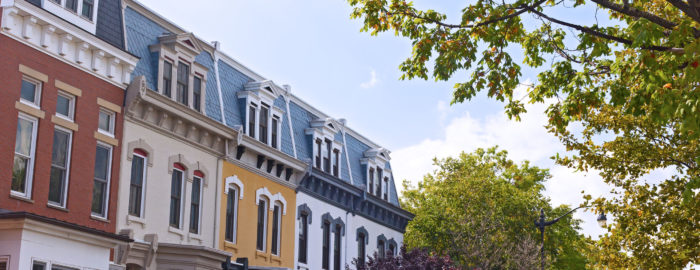Downtown Washington’s business district is booming with business. Over 33 million square feet of office space are in use in the 43 square block that some locals refer to as “The Golden Triangle,” which stretches from the White House to Dupont Circle. As many as 89,000 people work in this small area, but over 99% of them must commute from elsewhere in the city or even further away – with some traveling as much as an hour each morning and evening.
Why the Commute?
The reason for so many commuters is simple: there is a definitive residential housing availability crisis in this thriving business area. In fact, there are only 23 residential units in all 43 square blocks. All these are town homes, and some are as small as one bedroom. Unbelievably this means there are potentially less than 25 people living in the heart of this huge, sprawling city.
There has been a proposed solution to this availability crisis, although there are still some naysayers among the government officials. The idea is to take old, unused office space and convert it into livable apartments. With new office buildings being built continuously, vacancies are on the rise. This plan of action could potentially solve two issues at once: fixing the housing crisis and lowering office vacancy rates.
Incentives for More Residential
A bill has been put before legislation that would offer a pretty incentive for those willing to turn old office spaces into residential units. For those who convert, they are provided with a $20 discount on property taxes per square foot. These savings continue for either ten years, or until the building has accumulated five million in savings – whichever comes first. The key idea here, however, is that a minimum of 7% of all residential units built would have to be affordable housing. This puts off many potential buyers, as affordable housing – while great for the renter – does not create as much profit as luxury homes do.
The First Step
So far, the only conversion underway inside D.C Metro is at the former headquarters of Planned Parenthood. The building is currently undergoing conversion towards a luxury condominium that will add thirteen new residential units to the area. Still, this does not solve the issue. Although thirteen new condos will certainly help, that is still only bringing in a maximum of sixty people. The sad fact of the matter is that housing is in incredibly high demand but is currently cripplingly limited.
The big idea here is to make D.C. Metro a multi-use neighborhood, which is much more beneficial than the single-use business district it currently is. Multi-use neighborhoods are better for both the local market, and the people who live there. Full time residents can walk to work, shop at local stores, and eat at local restaurants.
Although the idea of converting unused offices into apartments is new for D.C., it is not a new idea. Around the nation people have begun converting these old spaces. In fact, conversions into residentials total more than 37.5 million square feet in the last decade alone.










